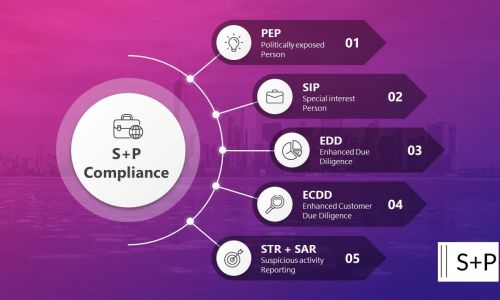How to streamline your KYC process
How to streamline your KYC process. When it comes to banking and financial services, Know Your Customer (KYC) is the process of a financial institution verifying the identity of its clients. The purpose of KYC is to prevent money laundering, terrorist financing, and other financial crimes. In order to comply with KYC regulations, banks and other financial institutions must collect certain information from their customers, such as name, address, date of birth, and identification number. They may also need to take steps to verify the customer’s identity, such as checking government-issued ID or running a credit check.
Compliance with KYC regulations can be time-consuming and costly for financial institutions, but it is essential for preventing criminal activity. By onboarding new clients in a compliant manner, financial institutions can protect themselves and their customers from potential financial crimes.
1. What is KYC?
As a business, it’s important to know who your customer is. This process is called “Know Your Customer” or “KYC.” There are many benefits to completing a KYC check on your customers. For one, it helps you build a better relationship with them by learning more about them. It also helps you comply with anti-money laundering (AML) regulations and prevent fraud. In order to complete a KYC check, you will need to collect some personal information from your customer.
This can include their name, address, date of birth, and identification number. You may also need to collect financial information, such as their income and assets. Collecting this information can be done in many ways, such as through an online form, over the phone, or in person. Once you have all the necessary information, you can begin the KYC process.
The first step is to verify your customer’s identity. This can be done by checking their government-issued ID, such as a passport or driver’s license. You can also use an independent service to verify their identity.
Next, you will need to verify that the information your customer has provided is accurate. This can be done by checking public records, such as property records or court filings. You can also use third-party services to verify this information. Once you have verified your customer’s identity and the accuracy of their information, you can then proceed to complete the KYC check.
This process can vary depending on your business and the regulations you need to comply with. However, Generally speaking, you will need to assess your customer’s risk level and make sure they are not on any sanctions lists.
Completing a KYC check on your customers is important for many reasons. It helps you build better relationships with them, comply with regulations, and prevent fraud. By taking the time to collect accurate information and complete the KYC process, you can ensure that your business is running smoothly and efficiently.
2. Why KYC matters
The financial industry is under constant pressure to prevent money laundering, terrorist financing and other criminal activities. In order to do this, they need to know who their customers are and what they’re up to. That’s where KYC comes in. KYC, or “know your customer”, is the process of verifying the identity of a new customer. This usually involves collecting some basic information like name, address and date of birth, as well as proof of ID and proof of address.
KYC is important because it helps financial institutions comply with anti-money laundering regulations and protects them from being used for criminal activities. It also helps build trust between the institution and the customer.
There are some challenges with KYC, like the cost and time associated with collecting all the required information. But overall, it’s a vital part of keeping the financial system safe.
3. The best way to come up with the perfect KYC strategy for your business
As the customer onboarding process becomes more and more digitalised, the need for an effective KYC strategy is more important than ever. By having a clear and concise KYC strategy in place, businesses can ensure that they are meeting all of the necessary regulatory requirements and providing their customers with a positive experience. There are a few key things to consider when developing a KYC strategy:
1) What are the regulatory requirements?
2) What is the customer journey?
3) What data do you need to collect?
4) How will you verify the customer’s identity?
5) How will you keep the customer’s data safe?
By taking all of these factors into account, businesses can develop a KYC strategy that is tailored to their specific needs and provides a positive experience for both the business and the customer.
4. Tools for creating great KYC
It’s no secret that Know Your Customer (KYC) compliance is essential for any business operating in the financial sector. Not only is it a regulatory requirement, but it’s also critical for protecting your business from financial crime.
But what is often overlooked is the fact that KYC compliance can also be a great opportunity to create a positive customer experience.
After all, onboarding new clients is the perfect time to set the tone for your relationship and ensure that they have all the information they need to do business with you. So how can you make sure that your KYC process is both compliant and customer-friendly? Here are some tips:
1. Make use of technology
There are now a number of excellent software solutions on the market that can help you streamline your KYC process and make it more efficient. By using one of these solutions, you can quickly gather all the necessary information from your new clients without putting them through a lengthy and complicated process.
2. Keep it simple
Your KYC process should be as straightforward and easy-to-understand as possible. Don’t try to overcomplicate things – remember that your goal is to gather the necessary information quickly and efficiently, not to overwhelm your new clients with paperwork.
3. Be transparent
Make sure that your new clients understand exactly what you’re doing and why. Explain what KYC compliance entails and why it’s important for both them and your business. This will help build trust and confidence from the outset.
4. Get feedback
Once you’ve implemented your KYC process, take some time to get feedback from your new clients. Find out what worked well and what could be improved. This will help you fine-tune your process and make it even more effective in the future.
5. What not to do
When you’re onboarding a new client, there are a few things you definitely don’t want to do. Here’s a list of things to avoid:
1. Don’t skip the KYC process
The KYC (know your customer) process is essential for any financial institution, and skipping it can put you at risk of financial crimes. Make sure you have all the necessary documentation from your client before moving forward.
2. Don’t rush the process
Rushing the onboarding process can lead to mistakes being made. Take your time to double-check everything and make sure all the documents are in order.
3. Don’t forget about compliance
Compliance is crucial in the financial world, so make sure you’re up to date on all the latest regulations. This will help you avoid any penalties or fines down the road.
6. In a nutshell
In order to ensure that our clients are legitimate and to comply with anti-money laundering regulations, we need to collect certain information from them. This process is known as “Know Your Customer” or KYC.
When onboarding new clients, we need to collect their full name, date of birth, address, and identification documents. We also need to verify their identity by checking against third-party databases. This may seem like a lot of work, but it’s important for us to protect our business and our clients.
By ensuring that everyone who does business with us is legitimate, we can avoid costly fines and penalties.




